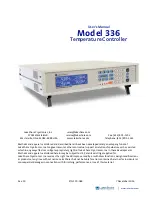
Attention:
Data loss can occur when the write-cache policy is enabled on the
physical drives, because the ServeRAID controller cannot manage write operations
that are owned by the individual hard disk drive and are not committed to the drive
media. The battery-backed memory cache on the ServeRAID controller can protect
the write operation only at a logical drive level. Therefore, set the hard disk drive
write-cache policy to Off or Disabled. Turning the write-cache policy Off on all drives
ensures the lowest risk to data loss if there is an unexpected power outage.
You can modify the write-cache policy settings from the Controller Configuration
section, which you can access by pressing Ctrl+A, and which is available from the
IBM ServeRAID Support CD, the ServeRAID Manager application, and the
arcconf
setcache
command.
Note:
The IBM default hard disk drive write-cache state for SAS drives is Disabled
or Off. For SATA drives, the IBM default hard disk drive write-cache policy is
Enabled or On.
For more information, see the following RETAIN tip.
ServeRAID changes hard drive write-cache mode unexpectedly
5070673
in the
Search
field at http://www.ibm.com.)
Defunct hard disk drives might return to normal operation after a
system restart
A hard disk drive that is marked Defunct during normal operation on a ServeRAID-8
series controller is treated as a replaced drive when the host server is restarted.
Defunct
is a physical-drive state in which the ServeRAID controller cannot
communicate correctly with the drive.
Visual indicators, such as the amber LEDs, are also reset and turn off.
During a server restart process, the ServeRAID-8 series controller executes normal
startup sequences for each drive that is attached to the system, assuming that each
drive is good. If a drive that is marked Defunct spins up, the controller takes
user-defined actions as if it were replaced in the system. If a drive that is marked
Defunct does not spin up, the disk might remain in a Defunct state, or appear
missing from the controller scan or in the ServeRAID Manager program. In this
situation, the amber LED that is lit still turns off.
If a hard disk drive returns to normal operation, the drive might not be bad. The
ServeRAID controller marks a drive Defunct if any component in the subsystem
prevents normal communication to the drive. This includes issues with the hard disk
drive firmware, cables, backplanes, drive connectors, and tray interposers. The
ServeRAID controller cannot determine which component has contributed to the
offline drive.
A strong indicator that the drive might be good is that the hard disk drive does
return to normal operation after a system restart. If this occurs, perform a
subsystem health check to make sure that all known issues are avoided by applying
known fixes. For more information, see “Periodic ServeRAID maintenance updates
and evaluation” on page 9.
Chapter 1. ServeRAID-8 series best practices and maintenance information
5
Summary of Contents for ServeRAID-8 Series
Page 1: ...ServeRAID 8 Series Best Practices and Maintenance Information...
Page 2: ......
Page 3: ...ServeRAID 8 Series Best Practices and Maintenance Information...
Page 6: ...Index 49 iv ServeRAID 8 Series Best Practices and Maintenance Information...
Page 41: ...Chapter 1 ServeRAID 8 series best practices and maintenance information 35...
Page 54: ...48 ServeRAID 8 Series Best Practices and Maintenance Information...
Page 57: ......
Page 58: ...Part Number 46M1375 Printed in USA 1P P N 46M1375...












































